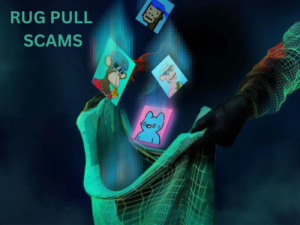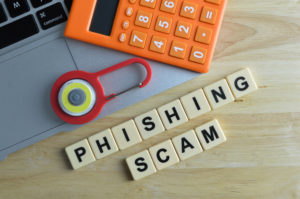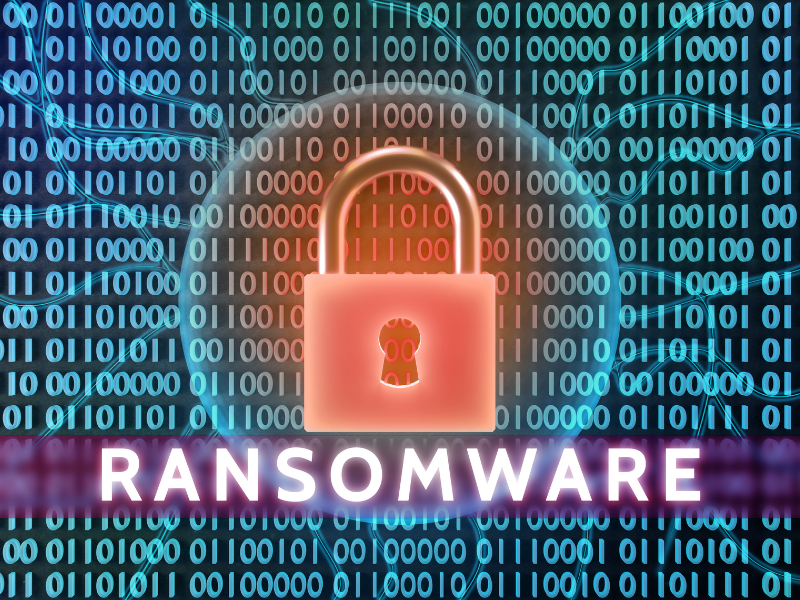Do you like digital art or collectibles? Non-fungible tokens (NFTs) may have piqued your interest recently and for a good cause. NFTs provide a one-of-a-kind opportunity to acquire digital assets that cannot be recreated or duplicated.
However, there are risks associated, as with any intriguing new trend. Unfortunately, scammers and fraudsters have already begun to exploit the popularity of these tokens and run NFT scams.
But don’t worry! We are here to investigate and tell you about the many tactics and techniques scammers employ and, most importantly, discover how to defend yourself against these fraudulent actions.
So saddle up and prepare to learn how to navigate the NFT world safely and correctly!
What are NFTs?
NFT is an abbreviation for ‘non-fungible token.’ Fungible implies interchangeable; for example, bitcoins are fungible because you can exchange one bitcoin for another and still have something with the same worth.
Each NFT is unique; hence it cannot be replaced by another NFT right away. Any digital content, including pictures, movies, and audio files, can be an NFT. They have drawn a lot of interest since they can use technology to buy and sell digital art.
These non-fungible tokens have the ‘token’ component of digital assets. You do not become the owner of a digital asset when you purchase an NFT connected to one. It may not be duplicated or used for commercial purposes.
What are NFT Scams?
Scammers have recently started to take advantage of this emerging market for non-fungible tokens, just like they would with any other asset market. NFT scams take several shapes, but they always have the same goal: to defraud individuals of their money.
By gaining a person’s login information to access another person’s digital or crypto wallet, NFT scams can be carried out directly or indirectly. Unfortunately, recovering lost digital wallet credentials or stolen money after a scam is quite difficult.
Let’s take a quick look at several NFT scams to help you gain a better understanding of what types of fraud are out there.
Types of NFT Scams
Both cryptocurrencies and NFTs operate in unregulated markets. It means that thieves have the capacity to exploit loopholes and commit fraud. As a result, there has been media coverage of OpenSea scams, NFT Ponzi schemes, NFT art finance scams, and other similar schemes. Among the most well-known NFT scams are:
- Rug pull scams
- Phishing
- Airdrop/giveaway scams
- Impersonation/catfishing
- Pump and dump scams
- Counterfeit/plagiarized NFTs
- Bidding scams
- Investor Scams
- Plagiarized NFTs
1. Rug Pull Scams
 A “rug pull” is one of the greatest NFT scams. When con artists push phony NFT projects or NFT collections, they engage purchasers. In rug pulls, the seller assures customers they will make a ton of money, and the frauds are frequently highly publicized on social media.
A “rug pull” is one of the greatest NFT scams. When con artists push phony NFT projects or NFT collections, they engage purchasers. In rug pulls, the seller assures customers they will make a ton of money, and the frauds are frequently highly publicized on social media.
But once the customer has fallen for the con and invested money in it, the promotions and the con artist’s online identity vanish overnight. The capacity to sell the NFT in the future will also disappear along with the con artist, who will transform into a ghost.
2. Phishing
 To purchase an NFT, you must first create a cryptocurrency wallet. Customers are frequently the targets of NFT phishing scams, which pose as legitimate adverts and solicit their private wallet keys and 12-word security password, for instance, on Discord, Telegram, and other public forums.
To purchase an NFT, you must first create a cryptocurrency wallet. Customers are frequently the targets of NFT phishing scams, which pose as legitimate adverts and solicit their private wallet keys and 12-word security password, for instance, on Discord, Telegram, and other public forums.
You can also receive phony alert emails from scammers posing as MetaMask, warning you that your wallet will be suspended due to security concerns and requesting that you click a link in the email to confirm your account. An NFT phishing scheme aims to steal data and empty your online wallet.
3. Airdrop/Giveaway Scams
 Watch out for NFT freebies. Scammers occasionally use social media to promote free NFT giveaways, luring people to share their NFT or sign up for their website in exchange for a free NFT. Once the recipient is ready to accept the gift, the con artists will ask about their cryptocurrency wallet and hack their account to steal NFTs and Bitcoin.
Watch out for NFT freebies. Scammers occasionally use social media to promote free NFT giveaways, luring people to share their NFT or sign up for their website in exchange for a free NFT. Once the recipient is ready to accept the gift, the con artists will ask about their cryptocurrency wallet and hack their account to steal NFTs and Bitcoin.
In one airdrop fraud, consumers were offered five times as much RARI cryptocurrency if they sent 200–25,000 RARI on a phony Rarible website. In the end, the con artist simply kept the cryptocurrency and never sent anything back.
4. Impersonation/Catfishing
Con artists would create fake social media accounts and connect spam websites to persuade clients to purchase fake NFTs. These profiles frequently copied actual artists.
Other criminals make false accounts for tech support. The scammer may send messages requesting account details to assist the victim before stealing their login information.
According to statistics from the cybersecurity firm BrandShield, the top celebrities whose likenesses were exploited for phony NFTs include Tom Brady, Mike Tyson, and Kim Kardashian.
5. Pump and Dump Scams
When a gang purchases a large number of cryptocurrencies to increase demand and drive up prices, it is known as a pump-and-dump fraud. When the value increases, the scam artist sells the assets and takes their money, leaving other individuals out of pocket.
One example of a pump and dump was when influencers for the video game team FaZe Clan promoted the new cryptocurrency Save the Children. Fans invested money in the coin, but almost immediately, its value fell.
6. Counterfeit/Plagiarized NFTs
Theft of intellectual property is a practice, and fraudulent NFTs are sold on reliable websites. The victims frequently discover too late that the phony or stolen NFT has no value after they have already paid for it.
One hacker named Monsieur Personne created replicas of the well-known Beeple NFT, “Everydays: The First 5000 Days,” which peaked with a bidding of $200. This was in major contrast to the original, which sold for $69 million,
7. Bidding Scams
Bidding scams occur when a fraudster places the highest bid on an NFT, but when it’s time to pay, they substitute a lesser-value coin. While selling your NFT, always check the cryptocurrency the top bidder uses before accepting.
When it comes time to pay, a con artist may appear to be offering five ETH for an NFT, but they will actually use a far lower-value currency, such as Dogecoin.
8. Investor Scams
After investors poured a ton of cash into the project, the unnamed developer of the growing NFT project “Evolved Apes” jumped ship with $2.7 million, or 798 Ether.
People who claimed to have won Evolved Apes NFT artworks in a contest on the project’s social media platforms never got their promised rewards. Ultimately, everything was a massive marketing ploy to gather money for a potential rug-pull fraud.
It’s crucial to keep this kind of scam in mind while investing in anything in the crypto industry, even though the majority of individuals opt to purchase NFTs rather than directly fund emerging projects.
9. Plagiarized NFTs
NFTs are fundamentally about producing distinctive digital tokens. Unfortunately, plagiarism is increasing on a lot of NFT platforms. Over 80% of NFTs created with the use of OpenSea’s minting tool were false, according to a recent analysis. So there’s a reasonable risk you might be purchasing a fake version of a legitimate artist’s creation.
Unsurprisingly, as soon as it is discovered that your NFT is a fake, its value will plummet. That’s why you should check an NFT before buying it. Additionally, look up the seller on social media to validate whether or not the artwork is authentic and theirs.
What are Some Examples of NFT Scams?
2021: Evolved Apes
An NFT rug pull occurred in October 2021, where 10,000 ‘Evolved Apes’ were sold as a collection. Customers were expected to receive a special ape of individual parts that could engage in combat with other apes in a virtual reality fighting game for cryptocurrency incentives.
The primary purpose of the NFT sale was to raise money for the game. The developer, known as “Evil Ape,” raised 798 Ether, or almost $2.7 million at the time, but after that, he vanished, leaving investors with little more than a jpeg to show for their money.
2021: Fractal
The NFT market for game items is called Fractal. Scammers organized and publicized a fake NFT giveaway in 2021, which cost users more than $150,000 in cryptocurrency.
Customers anticipated receiving a limited-edition NFT. Instead, they were in for a shock when they realized that a link they had clicked on through the project’s official Discord channel was a scam designed to steal cryptocurrency.
All the users who clicked the link and connected their cryptocurrency wallets in the hopes of receiving an NFT discovered that the scammer had received all of their cryptocurrency holdings.
2022: Frosties
The Frosties NFT scam was a rug pull fraud that netted at least $1.2 million. The creators of the Frosties NFT collection defrauded investors of their money. They severed all contact with the group, which peaked at about 40,000 members and had been promised a number of advantages.
How Can I Prevent NFT Scams?
Do Your Research
Before approving any transaction, double-check the details. Are you using a reliable and well-known marketplace? Can you see the transaction history for the buyer or the seller? To find out if there have ever been grievances about a creator’s transactions, read evaluations and consider their level of engagement. If you’re going to invest in a project, make sure the developers are real.
Don’t Open Files from Unknown Senders
Hackers have developed viruses that specifically target cryptocurrency wallets. You should avoid clicking links in unsolicited emails since they may take you to scam exchange sites. Never open any attachments or links from unrecognized sources.
Watch Out for Giveaways
Giveaways and “free drops” are frequent in the NFT industry; however, they can frequently pose security issues. Every NFT is governed by a contract that defines its permissible usage, which means that hackers have the ability to add authorizations such as accessing your wallet, selling your assets, and more. It’s crucial to never accept an NFT from an unknown or untrustworthy person.
Do Not Share the Private Key or Seed Phrase to Your Crypto Wallet
Keep your seed phrase and private key safe. Anyone with these details can access your wallet and render any NFTs or cryptocurrency untraceable. Use secure passwords for your cryptocurrency wallet and other NFT accounts where all of your NFT accounts are eligible for two-factor authentication.
Verify the Creator Behind the Project
Before transferring money, verify the information of the NFT creator you are purchasing from. Confirm the project creators’ sincerity and ask for a disclosure of their identities. A warning sign is when you can’t clearly identify the organizations sponsoring a project.
Deal with Official Sites
When doing crypto transactions, always visit authorized websites. Never enter your wallet’s key information into any links or pop-ups. Don’t fall into the trap of so-called bargains, which could lead you to unreliable and questionable blockchain networks.
Avoid Visiting Untrustworthy Sites
It’s simple to spell things incorrectly, but occasionally inputting a URL incorrectly by one or two letters will lead you to the incorrect website. Scam sites can be dangerous in the world of NFT.
Always verify the URL twice to make sure you are on the right website, and refrain from taking any actions that make you uncomfortable. Keep in mind that if an offer appears too good to be true, it generally isn’t.
Double-Check the NFT Project Price (H4)
Check the pricing on an authorized trading platform like OpenSea before making any NFT purchases. Be cautious if the price is lower than what is advertised on a reputable trading website; it could be a hoax.
Use Burner Wallets
With a burner wallet, you can set the maximum amount of money you’re willing to spend on a single purchase, including cryptocurrency, for transaction costs. It reduces your exposure to risk in the event of a scam.
Check Verification Marks
On OpenSea and other NFT marketplaces, the majority of trustworthy NFT vendors will have a blue checkmark next to their usernames and a clear listing of the collection’s attributes.
Check that the artist you are buying from has a verified account and is legitimate. Check out the artist’s social media channels or website. Ask them if the artwork you want to buy is theirs and check if they have the correct user profile.
Final Thoughts
You need to keep a watch on the situation in the NFT area to avoid losing all of your digital assets. Rug-pull, phishing, bidding, and pump-and-dump schemes are some of the most common scams.
Protect your NFTs by creating secure passwords for your NFT accounts and turning on two-factor authentication. Also, avoid disclosing your seed phrase and clicking on dubious links asking for your private wallet keys.
Contact Imagine IT today to learn more about how to protect yourself against NFT scams and other cybercrimes.





